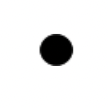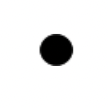
Unit 3 FRQ (Circular Motion & Gravitation)
3 min read•november 17, 2021
AP Physics 1 Free Response Question for Circular Motion and Gravitation
👋 Welcome to the AP Physics 1 Unit 3 FRQ ( & ). These are longer questions, so grab some paper and a pencil, or open up a blank page on your computer. After you finish, you can see how you did with Unit 3 FRQ (Circular Motion & Gravitation) Answers.
⏱ The AP Physics 1 exam has 5 free-response questions, and you will be given 90 minutes to complete the FRQ section. (This means you should give yourself ~18 minutes to go through each practice FRQ.)
🤔 Need a quick refresher of the unit as a whole? Check out the Unit 3 Overview.
😩 Getting stumped halfway through answering? Look through all of the available Unit 3 Resources.
🤝 Prefer to study with other students working on the same topic? Join a group in Hours.
Learning Objectives and Science Practices
3.B.1.2 Design a plan to collect and analyze data for motion (static, constant, or accelerating) from force measurements, and carry out an analysis to determine the relationship between the and the of the individual forces. [SP 4.2, 5.1]
3.B.1.3 Re-express a representation into a , and solve the for the acceleration of the object. [SP1.5, 2.2]
3.B.2.1 Create and use free-body diagrams to analyze physical situations to solve problems with motion qualitatively and quantitatively. [SP 1.1, 1.4, 2.2]
3.A.1.1 Express the motion of an object using narrative, mathematical, and graphical representations. [SP 1.5, 2.1, 2.2]
3.A.2.1 Represent forces in diagrams or mathematically, using appropriately labeled vectors with magnitude, direction, and units during the analysis of a situation. [SP 1.1]
Setup

A portion of a rollercoaster is shown above. At point a, the track has a of approximately 3.0 m and the cart has a speed of 2.2 m/s. The mass of the rider is approximately 60 kg. We will be ignoring the mass of the car.
Questions
Part A
(i) Without manipulating equations, state whether the rider feels lighter, heavier, or the same as they normally would while standing still on earth. Briefly explain your reasoning.
(ii) On the dot below, draw and label a free body diagram for the rider at point a.

(iii) How heavy would a 60 kg passenger feel at point a (what is their )? Make sure you show ALL work!
Part B
At point b, the track has a of 13 m and the rider feels four times heavier than normal.
(i) Without manipulating equations, state whether the rider is moving faster, slower, or the same speed at point b as they were at point a. Briefly explain your reasoning.
(ii) On the dot below, draw a free body diagram for the rider.

(iii) How fast is the rider traveling at point b? Make sure to show all your work.
Part C
At point c, the track and cart exert a force of 400 N on the 60 kg rider. Their velocity is 7.0 m/s.
(i) On the dot below, draw a for the rider at point c.

(ii) Determine the of the track at point c. Make sure to show all work.
Answers & Rubric
💯 Ready to see how you did? Take a look at the Unit 3 FRQ (Circular Motion & Gravitation) Answers.
Key Terms to Review (8)
Apparent Weight
: Apparent weight refers to what we perceive as our weight when we are in non-inertial reference frames, such as when accelerating or decelerating. It can differ from our actual weight due to additional forces acting on us.Circular Motion
: Circular motion refers to the movement of an object in a circular path around a central point. It involves constant change in direction but not necessarily speed.Free-Body Diagram
: A free-body diagram is a visual representation that shows all the forces acting on an object. It helps analyze and understand how different forces affect the motion of an object.Gravitation
: Gravitation is the force of attraction between two objects with mass. It is responsible for keeping planets in orbit around the sun and objects on Earth's surface.Mathematical representation
: Mathematical representation refers to the use of equations, graphs, and other mathematical tools to describe and analyze physical phenomena.Net Force
: The net force is the overall force acting on an object, taking into account both magnitude and direction. It determines the object's acceleration or deceleration.Radius
: The radius is defined as the distance from the center to any point on the circumference (outer edge) of a circle or sphere. It is half the diameter.Vector Sum
: The vector sum is the result of adding two or more vectors together using vector addition. It represents both magnitude and direction.Unit 3 FRQ (Circular Motion & Gravitation)
3 min read•november 17, 2021
AP Physics 1 Free Response Question for Circular Motion and Gravitation
👋 Welcome to the AP Physics 1 Unit 3 FRQ ( & ). These are longer questions, so grab some paper and a pencil, or open up a blank page on your computer. After you finish, you can see how you did with Unit 3 FRQ (Circular Motion & Gravitation) Answers.
⏱ The AP Physics 1 exam has 5 free-response questions, and you will be given 90 minutes to complete the FRQ section. (This means you should give yourself ~18 minutes to go through each practice FRQ.)
🤔 Need a quick refresher of the unit as a whole? Check out the Unit 3 Overview.
😩 Getting stumped halfway through answering? Look through all of the available Unit 3 Resources.
🤝 Prefer to study with other students working on the same topic? Join a group in Hours.
Learning Objectives and Science Practices
3.B.1.2 Design a plan to collect and analyze data for motion (static, constant, or accelerating) from force measurements, and carry out an analysis to determine the relationship between the and the of the individual forces. [SP 4.2, 5.1]
3.B.1.3 Re-express a representation into a , and solve the for the acceleration of the object. [SP1.5, 2.2]
3.B.2.1 Create and use free-body diagrams to analyze physical situations to solve problems with motion qualitatively and quantitatively. [SP 1.1, 1.4, 2.2]
3.A.1.1 Express the motion of an object using narrative, mathematical, and graphical representations. [SP 1.5, 2.1, 2.2]
3.A.2.1 Represent forces in diagrams or mathematically, using appropriately labeled vectors with magnitude, direction, and units during the analysis of a situation. [SP 1.1]
Setup

A portion of a rollercoaster is shown above. At point a, the track has a of approximately 3.0 m and the cart has a speed of 2.2 m/s. The mass of the rider is approximately 60 kg. We will be ignoring the mass of the car.
Questions
Part A
(i) Without manipulating equations, state whether the rider feels lighter, heavier, or the same as they normally would while standing still on earth. Briefly explain your reasoning.
(ii) On the dot below, draw and label a free body diagram for the rider at point a.

(iii) How heavy would a 60 kg passenger feel at point a (what is their )? Make sure you show ALL work!
Part B
At point b, the track has a of 13 m and the rider feels four times heavier than normal.
(i) Without manipulating equations, state whether the rider is moving faster, slower, or the same speed at point b as they were at point a. Briefly explain your reasoning.
(ii) On the dot below, draw a free body diagram for the rider.

(iii) How fast is the rider traveling at point b? Make sure to show all your work.
Part C
At point c, the track and cart exert a force of 400 N on the 60 kg rider. Their velocity is 7.0 m/s.
(i) On the dot below, draw a for the rider at point c.

(ii) Determine the of the track at point c. Make sure to show all work.
Answers & Rubric
💯 Ready to see how you did? Take a look at the Unit 3 FRQ (Circular Motion & Gravitation) Answers.
Key Terms to Review (8)
Apparent Weight
: Apparent weight refers to what we perceive as our weight when we are in non-inertial reference frames, such as when accelerating or decelerating. It can differ from our actual weight due to additional forces acting on us.Circular Motion
: Circular motion refers to the movement of an object in a circular path around a central point. It involves constant change in direction but not necessarily speed.Free-Body Diagram
: A free-body diagram is a visual representation that shows all the forces acting on an object. It helps analyze and understand how different forces affect the motion of an object.Gravitation
: Gravitation is the force of attraction between two objects with mass. It is responsible for keeping planets in orbit around the sun and objects on Earth's surface.Mathematical representation
: Mathematical representation refers to the use of equations, graphs, and other mathematical tools to describe and analyze physical phenomena.Net Force
: The net force is the overall force acting on an object, taking into account both magnitude and direction. It determines the object's acceleration or deceleration.Radius
: The radius is defined as the distance from the center to any point on the circumference (outer edge) of a circle or sphere. It is half the diameter.Vector Sum
: The vector sum is the result of adding two or more vectors together using vector addition. It represents both magnitude and direction.
Resources
© 2024 Fiveable Inc. All rights reserved.
AP® and SAT® are trademarks registered by the College Board, which is not affiliated with, and does not endorse this website.